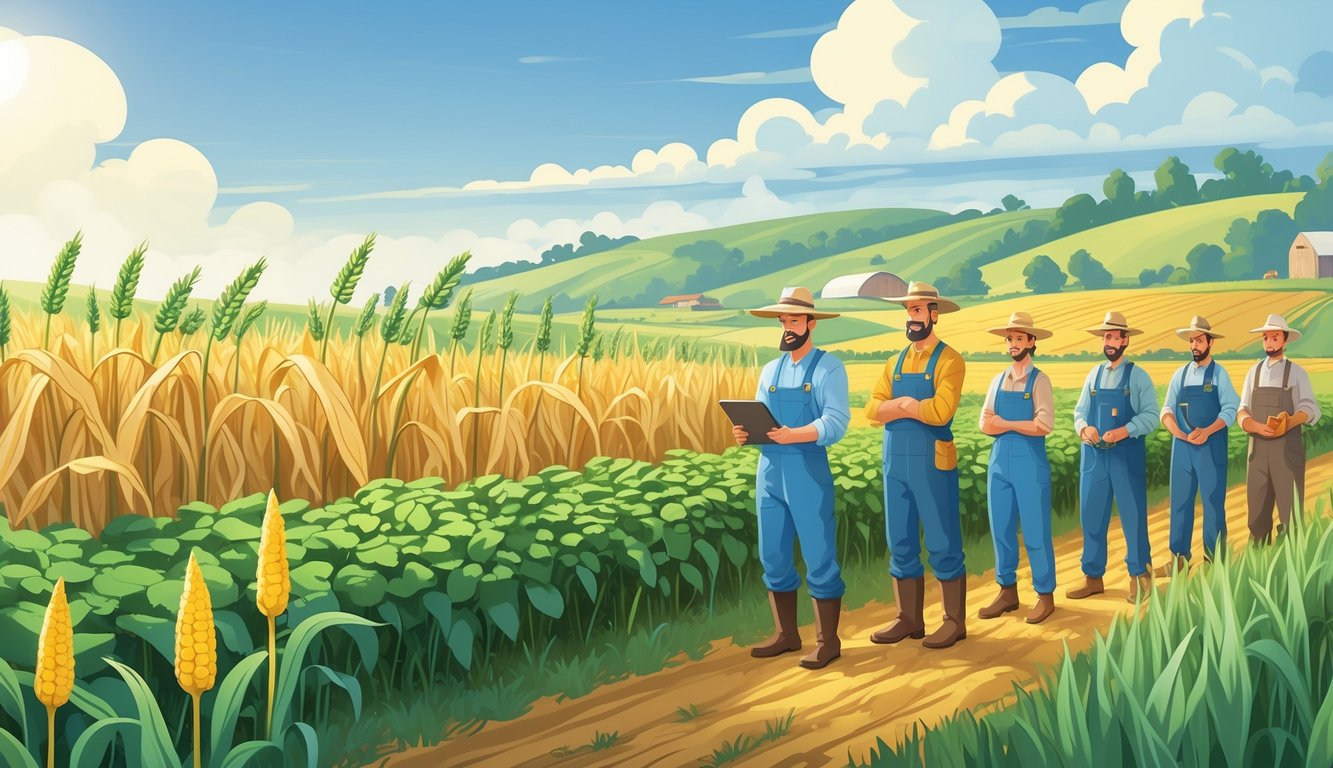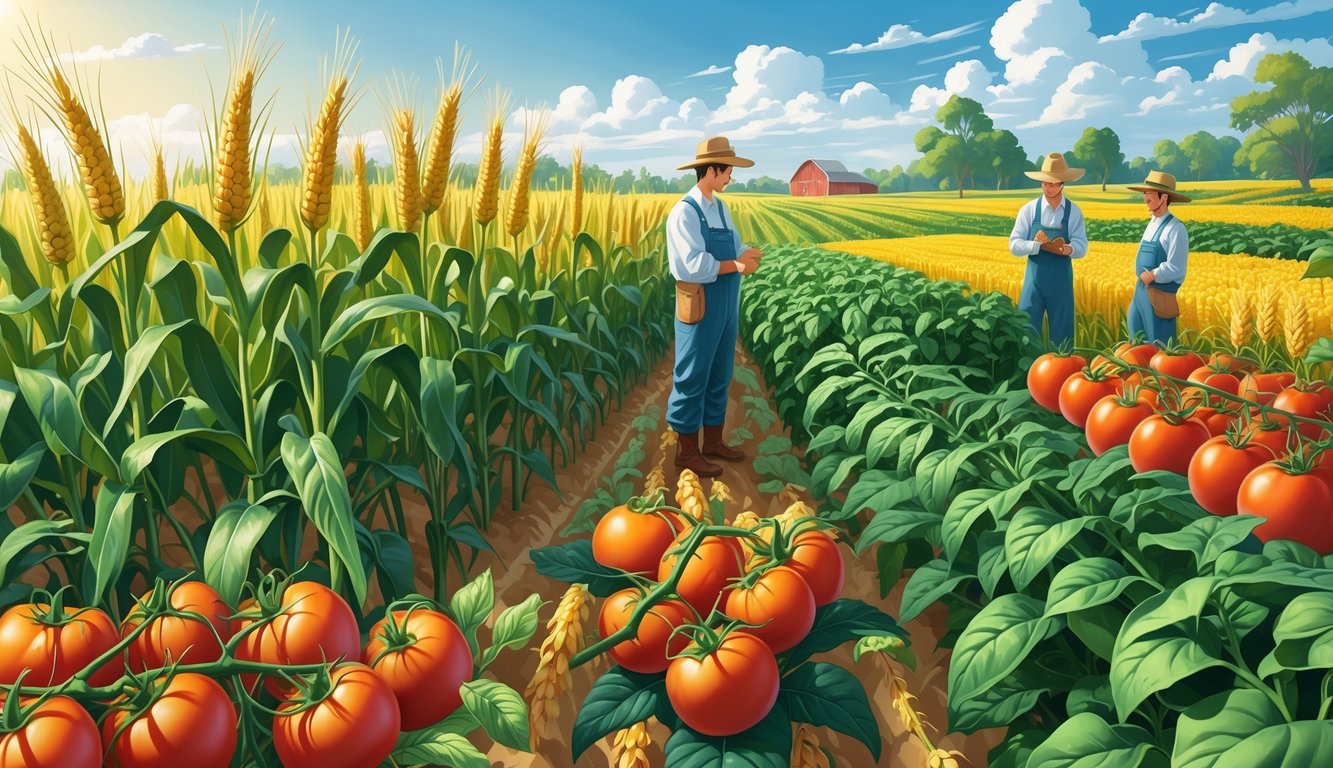
Breakthrough? Please. Every spring, I’m out there squinting at my rows, trying to figure out what’s not shriveling or getting that weird fuzz. Why does mildew always hit the stuff I actually care about? Honestly, most of us grab disease-resistant crops because, well, the numbers don’t lie—less blight, less drama, more actual harvest. I mean, look at recent studies on crop performance, or just ask anyone who keeps a ledger. Not exactly glamorous, crawling around at sunrise poking at “the latest hybrid” that the seed guy swore by, but when you see the market reports and your own receipts, it’s obvious. Still, last year’s tomato mess? Not over it.
You’d think with all the hype, these “bulletproof” crops would actually win sometimes. But, no—pathogens keep getting smarter, like they’re playing some sick game. Scientists love to argue about trade-offs between resistance and yield, but if you’ve watched half your wheat rot, you’ll take a yield dip over a total wipeout. Meanwhile, the news loves a crisis, but I just want a boringly reliable harvest. My neighbor? He’s still saving seeds like it’s 1920—right up until blight wipes him out, then suddenly he’s at my door asking for seed. Go figure.
And don’t even get me started on the “final solution” for crop disease. Every year there’s a new fix, and every year the pathogens just…change. It’s like my uncle’s potato famine stories—gets more dramatic every time. Feels like I’m stuck in a race I didn’t sign up for. Exhausting. But honestly, disease-resistant crops are where food security, sustainability, and, yeah, my patience all crash into each other. Maybe that’s why you don’t see farmers bragging about it—we’re too busy hedging bets while the rest of the world yells about GMOs on the internet.
Understanding Disease Resistance in Crops
You ever notice how two fields look exactly the same from the road, but if you picked the wrong seed, one’s trashed by mildew and the other’s fine? Crop resilience, or whatever you want to call it, comes down to breeders fighting with genetics and the never-ending battle with stuff that wants to eat your plants. Nothing works the same twice. If someone says otherwise, they’re probably not out there at sunrise checking for leaf spots.
What Is Disease Resistance?
Honestly, sometimes “resistant” feels like a lie. Last time I paid extra for “blight-proof” tomatoes, I still had a whole row curl up and die. Disease resistance, at least from what I’ve seen, isn’t magic. It’s just a plant’s way of fighting off, or at least slowing down, whatever bacteria or fungus is trying to take it out.
I’ve watched whole fields lose weeks of growth when resistance fails. The real deal, according to those plant nerds at Cornell, is usually a few genes that kick in as soon as a pathogen shows up. Compared to “tolerant” types, the resistant ones don’t necessarily dodge infection, but the damage is less, spread is slower, and yields don’t crash as hard—assuming you’re lucky enough that the same strain is attacking. Permanent? No way. Nothing in farming is.
Pathogens and Plant Diseases
If you listen to extension agents, you’d think it’s just about spotting a little mold. In reality, plant diseases are like a bad party—fungi, bacteria, viruses, nematodes, you name it. Fungi alone take out more than half the world’s crops, or so the USDA says. Wild, right? And those viral diseases? They just jump fields every year, mutating faster than anyone can keep up.
Bacterial blight? Total nightmare. I watched pea crops in the Northwest get wiped out in one muggy summer, and the experts just shrugged. “That’s agriculture.” Sometimes the disease just sits there, waiting for the right weather, then—boom—total disaster. My neighbor tried dosing his field with custom microbes. Yields tanked. At least we learned that fungicides aren’t a miracle. Not for every field, anyway.
Types of Disease Resistance in Crops
Genetic resistance—everyone talks about it, but after a few seasons, definitions blur. Vertical resistance is supposed to be strong but only against one thing. If a new strain shows up? Useless. Horizontal resistance is more like a weak umbrella—protects against a bunch of stuff, but not perfectly.
I had a corn hybrid once—great against Northern corn leaf blight if the wind came from the east, but tar spot? Forget it. They love to sort this into categories, but honestly, some of these mechanisms are so technical nobody bothers unless they’re in a lab. Breeders keep stacking genes, but then the pathogens change, and suddenly last year’s “resistant” is just…not. For more on this endless cycle, I skim agronomy journals on disease-resistant crops and half the time end up more confused.
Popular Disease-Resistant Crops Quietly Favored by Farmers

Every time someone brags about a “new” resistant variety, I remember slogging through a muddy trial plot, hoping something would actually survive. It’s always the boring workhorse crops that save the day when sprays and rotations don’t cut it.
Bt Cotton
Bt cotton—no one ever talks about it, but it’s everywhere. The ISAAA says farmers using it cut pesticide use by half. That should be a big deal, but nobody outside ag seems to care.
Growers grumble (loudly, at meetings) that people don’t get how Bt cotton basically makes its own insecticide, hammering bollworms and pink bollworms. That’s not just convenience—it keeps people in business. Of course, the whole “mandatory refuge” thing is a mess. Nobody does it perfectly, so resistance is always lurking.
Other insect-resistant crops? Not tested nearly as much in real-world chaos. Bt cotton still wins because yields don’t rollercoaster, and people don’t go broke when worms show up. Every July, I walk past these fields and everyone pretends it’s all normal.
Rainbow Papaya and Papaya Ringspot Virus
Rainbow papaya—honestly, it’s the punchline at every farm meeting. But it saved papaya in Hawaii, period. The ringspot virus nearly killed off the whole crop in the ‘90s. The fix wasn’t fancy. It was desperation.
Agronomist in Hilo once told me the virus “moved faster than bad gossip.” If you’ve grown papaya, you know that’s true. Rainbow papaya is the only reason Hawaiian growers are still in the game. People who romanticize non-GMO fruit? Good luck.
Growers just replant Rainbow. Chemicals never worked anyway. If that’s not resistance by necessity, I don’t know what is. The nitty gritty is here, if you care.